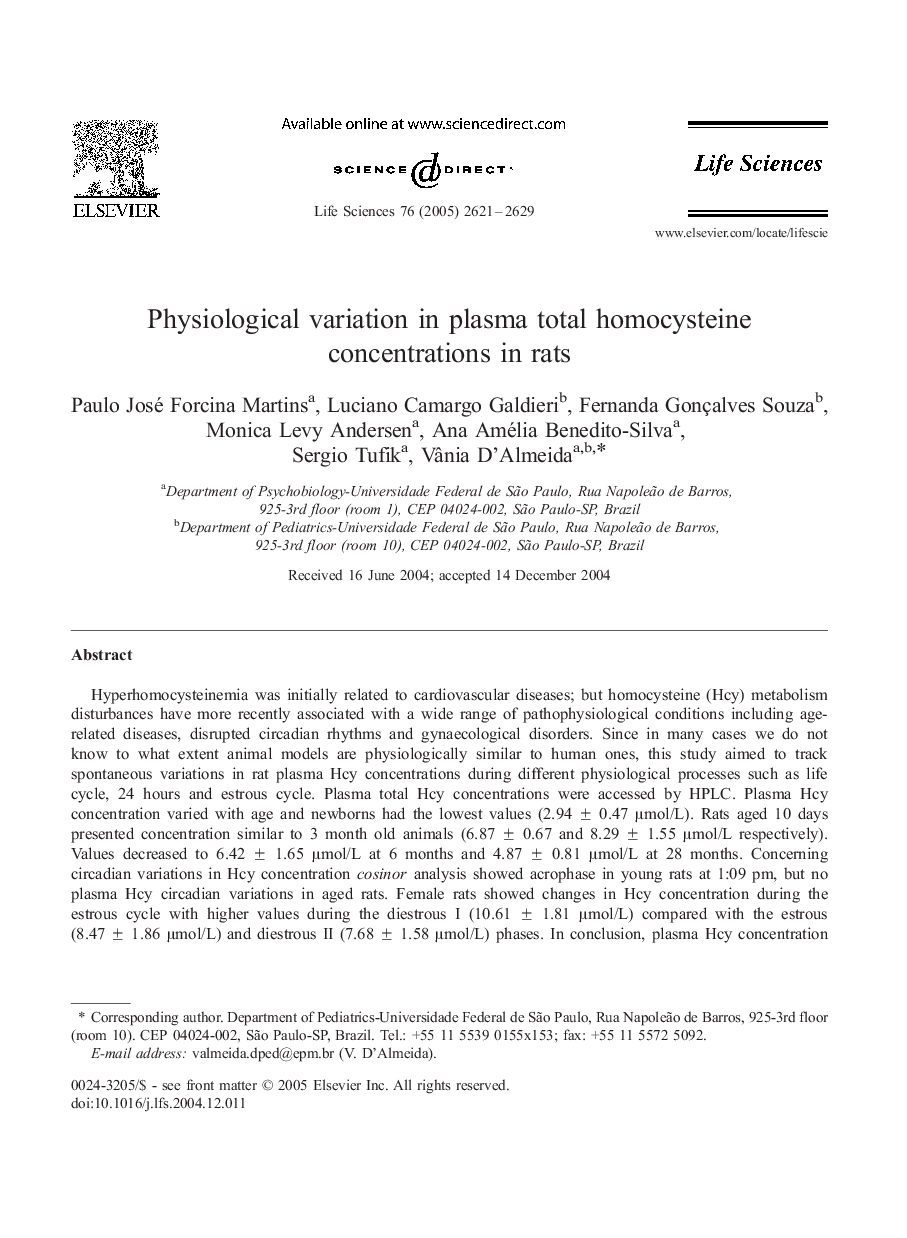| Article ID | Journal | Published Year | Pages | File Type |
|---|---|---|---|---|
| 2553744 | Life Sciences | 2005 | 9 Pages |
Abstract
Hyperhomocysteinemia was initially related to cardiovascular diseases; but homocysteine (Hcy) metabolism disturbances have more recently associated with a wide range of pathophysiological conditions including age-related diseases, disrupted circadian rhythms and gynaecological disorders. Since in many cases we do not know to what extent animal models are physiologically similar to human ones, this study aimed to track spontaneous variations in rat plasma Hcy concentrations during different physiological processes such as life cycle, 24 hours and estrous cycle. Plasma total Hcy concentrations were accessed by HPLC. Plasma Hcy concentration varied with age and newborns had the lowest values (2.94 ± 0.47 μmol/L). Rats aged 10 days presented concentration similar to 3 month old animals (6.87 ± 0.67 and 8.29 ± 1.55 μmol/L respectively). Values decreased to 6.42 ± 1.65 μmol/L at 6 months and 4.87 ± 0.81 μmol/L at 28 months. Concerning circadian variations in Hcy concentration cosinor analysis showed acrophase in young rats at 1:09 pm, but no plasma Hcy circadian variations in aged rats. Female rats showed changes in Hcy concentration during the estrous cycle with higher values during the diestrous I (10.61 ± 1.81 μmol/L) compared with the estrous (8.47 ± 1.86 μmol/L) and diestrous II (7.68 ± 1.58 μmol/L) phases. In conclusion, plasma Hcy concentration varied spontaneously with ontogenic development and during the estrous cycle and presented a circadian rhythm variation in young rats.
Related Topics
Health Sciences
Medicine and Dentistry
Cardiology and Cardiovascular Medicine
Authors
Paulo José Forcina Martins, Luciano Camargo Galdieri, Fernanda Gonçalves Souza, Monica Levy Andersen, Ana Amélia Benedito-Silva, Sergio Tufik, Vânia D'Almeida,
